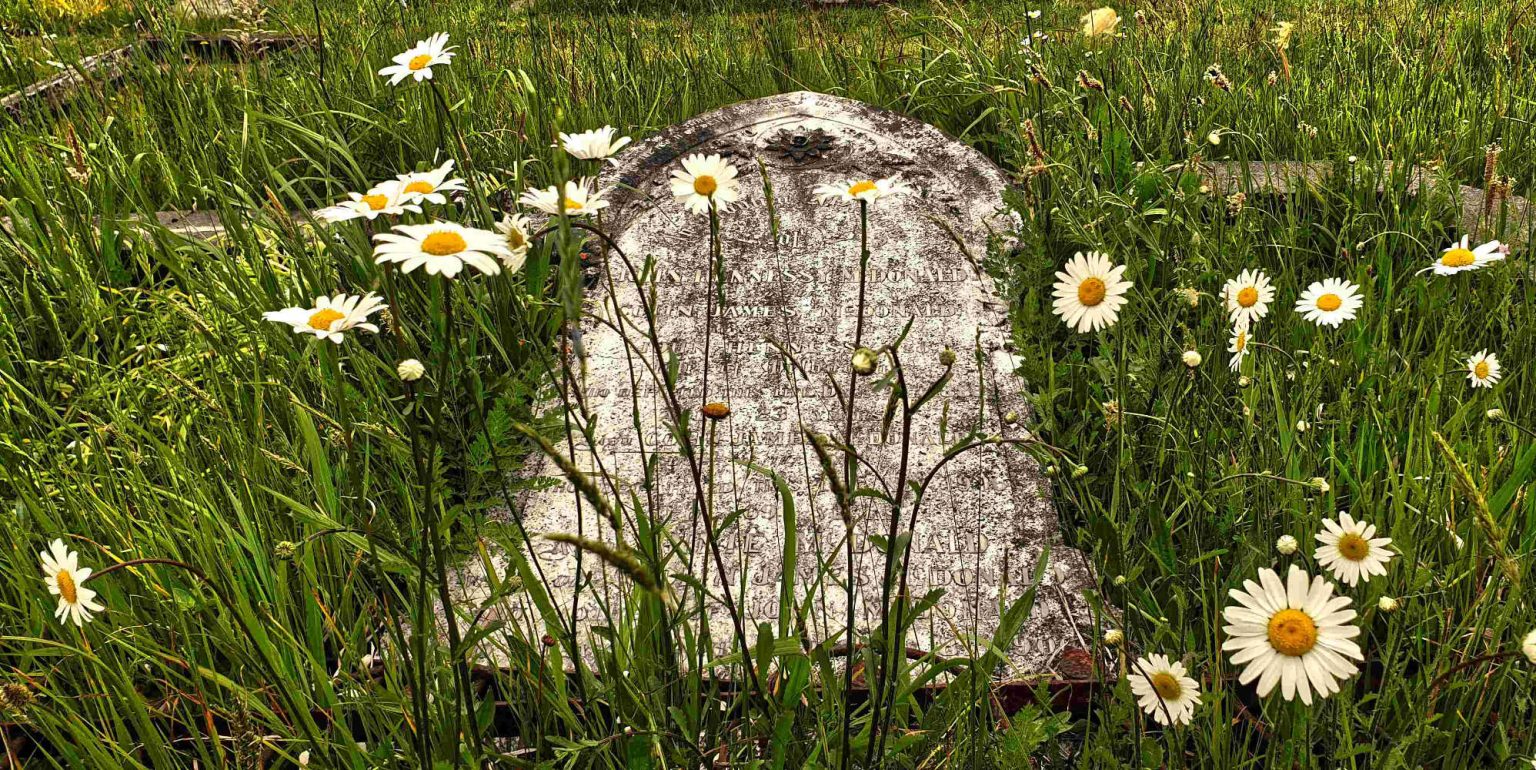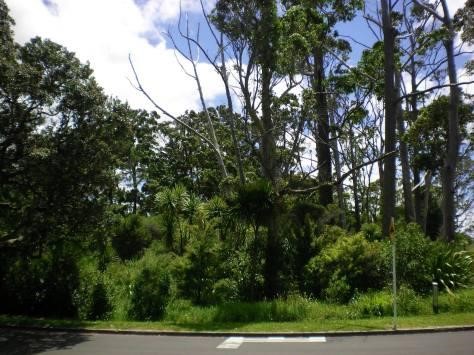Cemeteries
Where the bodies are buried is a comtemplative place of quiet with planted trees, shady spots to rest and relax and a sense of history etched on gravestones. Auckland delivers with two historic cemeteries worth a detour.

A place to walk the dog, mull over the lives of people in the 1880’s, relate to the fear and sadness caused by the 1919 Influenza Epidemic, think about the natural burial reserve and find an awe moment as you stroll among the tombstones of Waikumete Cemetery. Waikumete Cemetery is an open burial ground hence visitors are requested to respect the wishes of mourners. Naturalised plants and a sense of timelessness peramates the spaces with plenty of opportunity to take a seat and take in the views.
Auckland Symonds street cemetery
The first urban cemetery in Auckland was located on Symonds St with interments in 1842. The Symonds Street Cemetery contains the graves of many of its early founders, such as William Hobson, the first governor of New Zealand and co-author of the Treaty of Waitangi.
Burials continued at the cemetery until the early 20th century. The closed cemetery has been vandalised and is in a state of disrepair.

During the construction of Auckland’s southern motorway local gossip recounts that during the relocation of some 4,100 bodies some of the gravestones were actually used as highway foundation filler. The bodies were then relocated to a mass grave, and a memorial was built.
And the art of decay is a topic of increasing interest to visitors, for ideas check The art of decay, abandoned objects – Best Bits. There is always the debate whether a building should be resorted to its former glory or left to its own devices.
Symonds Street cemetery has a number of interesting short walks. For a guided tour check out The Friends of Symonds Street Cemetery (FSSC) organises walks and activities in the Cemetery mainly from November to May. Keep an eye on our Facebook page for dates and times.


In spring and early summer the rose trail walk is glorious with the bloom of heritage roses spilling over graves and wrought iron grave fences.
For more information about the Symonds Street walks, check out Auckland heritage walks, Symonds Street.

Waikumete cemetery Auckland, Glen Eden
Discover one of New Zealand’s major cemeteries with a wealth of stories to tell visitors.
Cemeteries are a reflection of the era with ornate Victorian statues of angels and upraised arms reaching to heaven. Check out the Croatian tombs and the mausoleum of winemakers in Waikumete Cemetery Auckland. It is fascinating looking at the mausoleum building styles. The cemetery is a great place for a picnic and the kids will not be bored. For couples there is plenty of privacy and quiet corners.
- Holocaust Memorial with ashes from Auschwitz concentration camp
- NZ 1919 Influenza pandemic memorial with its contemplative swath of grass
- ANZAC Cenotaph adjoining the largest burial ground for military service personnel
- Mausoleums of early wine makers, Corban family from Lebanon and some of the many Croatian families who settled in Henderson, including the Nobilos, Ercegs, Marinkovichs, Zencics and Vuletics
- Over 70,000 graves with the natural burial section the latest addition


Background
Auckland’s overcrowded Symonds Street cemetery led to establishment of the Waikumete Cemetery in 1876 which was officially opened in 1886. A railway line from Newmarket to Waikomiti in 1880 and roads were built. To prevent grazing animals a fence was built. By May 1886 a sexton’s cottage, assistant sexton’s accommodation, and mortuary chapel were completed. The Jewish community ensured there was an appropriate Jewish Prayer House. Currently the Waikumete Cemetery covers nearly 306 acres.
Arrival by train
Check out the Glen Eden railway station, a heritage building opened in March 1880 specifically to support the newly opened cemetery. Visiting the cafe located in the historic building are numerous wall photographs of the funeral trains with commentary. The rail guards called the Sunday train ‘the perfume run’ due to the numerous bouquets of flowers carried by mourners. The cemetery continues to be supported by public transport with the current Glen Eden railway located on the Western Line of the AT Metro rail network in Auckland.
Chapel of the Faith in the Oaks
The gothic style chapel is designed in the form of a Greek cross. The building is double cavity brick with a Welsh slate roof. The Chapel is available for hire for spiritual events such as weddings, funerals, christenings, prayer meetings. Rates vary from weekdays to weekends. Please contact the Waikumete Cemetery office to arrange a hire. The majestic oaks and quiet corner of the cemetery gives a sense of history to the area.
Jewish Prayer house
The Tahara house or Jewish prayer house was built by kauri in 1886 was purchased by the Oratia Cemetery Trust and moved to the Oratia Cemetery 4 months later where it was restored. A new octagonal designed Jewish prayer house was built at Waikumete within the new Jewish burial area in 1990.


Returned Service Persons Area
The regular line of matching tombstones with a simple cross is a dramatic statement of the loss of life for service personnel while on active duty. The cenotaph was built in 1921 as a memorial to honour those who lost their life in World War I. 1963 a memorial was constructed adjacent to the cenotaph in memory of the 57 service men of the Auckland Province who sacrificed their lives for their country during the 1st and second world wars who have no known graves. The Gallipoli ‘Lone Pine’ seedling was planted by the Returned Services Association in remembrance of the fallen.
Burial Areas were laid out in a grid manner according to religious denominations. It is interesting to walk through the heritage areas of the cemetery from the Jewish section, Catholic and various Protestian denominations. The names are an indication of belief with often the country of origin of the deceased telling the story of New Zealand immigration. The burial areas were planned out in a grid pattern with the Anglican denomination closest to the railway line and then Wesleyan, Presbyterian, Non Conformist, Roman Catholic, Hebrew and Public. The Anglicians had the least distance to walk to the railway line with the Jewish burial grid the furthest. In the first year 559 burials were recorded.
Muslim burial areas were opened in 1965, 1991, 2002 and a Liberal Muslim area in 1991.


The holocaust memorial was erected in memory of the six million Jewish men, women and children who lost their lives prior to and during WW2 as victims of Nazi Genocide. Ashes recovered from the crematorium in Auschwitz in 1946 were interred at the base of the memorial.
In 1996 a public Urupa was established to provide a burial place for Maori who have lost connections with iwi, or are unable to return to their turangawaewae. An Eco Burial area has recently come to fruition and is currently under development.
There are over 90,000 graves and plots.
A black granite memorial stone commemorates those who died in the 1918 Influenza Epidemic. It was erected in 1988 and was donated by R. G. Thompson Limited & Trethewey Stone Industries. The influenza outbreak in NZ reached epidemic proportions in late October and peaked in November 1918. More than a third of the people who succumbed to the deadly influenza outbreak are buried at Waikumete cemetery.
The flu monument has been placed in the front but there are flu victims buried in the next few rows and in family graves all over the cemetery. There are also flu victims among the returned soldiers that are in the soldiers section of the cemetery.


The graves of paupers in the last century lie in an area called Gum Tree Gully, adjacent to the 1918 Flu epidemic plots. The paupers grave area is located in the Anglican Divisions of M and N. Now marked by the “ghost gums” and the bush regeneration on Eucalyptus Avenue near the rear gate of Waikumete Cemetery. The paupers graves had no grave markers, headstones meaning the trees and regenerating bush is now masking their final resting place.
On July 30th 1890, Constable McLeod aged 44, became the first Police Officer in New Zealand to be killed in the line of duty. He was shot dead by a gumdigger named Henry Funcke, (also known as Robert Funcke), whilst on the steamer Minnie Casey, a few kilometres South of Dargaville. Henry Funcke is buried in the paupers grave area of Waikumete Cemetery.
Croatian Mausoleums in Magnolia Way. Well known New Zealand wine making dynasties have their personal mausoleums. The Nobilo family is identified with the eagle on the roof. The first mausoleum was built for wine maker Assid Abraham Corban, who died on December 2nd 1941. It is in Anglican Division K, Row 9, Plot 1-3. The Corban family site echoes a Greek temple. To lie in a mausoleum you are required to be embalmed. Stainless steel is now the preferred lining in a solid wood casket. If you wish to build a mausoleum, there is a large sign on the hill giving some building specifications.
Te Urupa O Waikumete was officially opened on the 16th of August 1996.
The Urupa and the 5 million gallon water reservoir. The Urupa was opened in 1996.


Waikumete Cemetery contains 107 Commonwealth graves from WWI. There is also a memorial for those who died in the war and have no known grave.
The Waikumete cemetery cenotaph was unveiled on ANZAC Day 1921 by Major-General Sir Edward Chaytor. The monument was erected to fallen comrades at Waikumete cemetery by the Returned Soldiers.
An aerial view of the Soldiers Area at Waikumete cemetery. In June of 1917 the City Engineer prepared a plan for the site. Up until 1918 military veterans were buried according to their denominations in the original area of the cemetery. This photo also shows the Cenotaph top centre.
The first burial in the “Soldiers Area” was that of William Eli Johnston in January 1918. That makes Waikumete the first Soldiers Cemetery – Karori Cemetery in Wellington had their first burial in July 1918.
This gun has been installed at Waikumete Cemetery in the Quartermasters Quadrant. The artillery piece was used during World War 2 and now stands as a lasting monument to all who served. It keeps watch over those who rest in Waikumete Cemetery and has been installed in the Quartermasters Quadrant.
The Erebus memorial: “Erected in memory of those lost in the Mount Erebus air disaster of 28 November 1978 who were either unidentified or not recovered. A service of burial was held on this site on 12 February 1980”.

Travel Pack Information
Behind the scenes at Waikumete Cemetery August 2019 is an excellent resource for readers wishing to find out more.

Did You Know?
- Waikumete Cemetery is New Zealand’s largest – 108 hectares – Symonds Street is Auckland’s oldest
- Between June 2018 and July 2019 there have been a total of 2,631 cremations, 1,624 burials and 1,067 ash burials at Auckland cemeteries
- The cremator temperature is 770 degrees minimum to cremate but can climb to 1300-1400 degrees Celsius
- The average individual takes an hour and a half to cremate based on age and weight and up to three hours for larger individuals
Opening Hours
Gates open
7.30am – 8.30pm daylight saving
and
7.30am – 6pm during winter
Office hours: Mon – Sat 8:30am-4pm

BEST BITS TRAVEL GUIDE
Best Bits travel guide is published by nzjane.com. Owned and managed by PacificJane Ltd.
Our editors independently visit tour operators, purchase tickets, pay for accommodation, and rate products and places. We are not paid to go on a tour or visit a place. We only make money if you decide to purchase a product through our website links. We promise to never accept free products from manufacturers in return for boosting their products. Read more about our affiliate programme in the terms and conditions HERE.

















